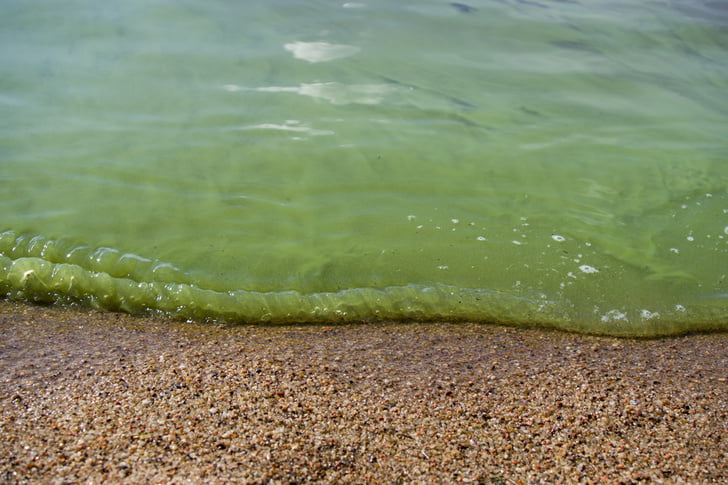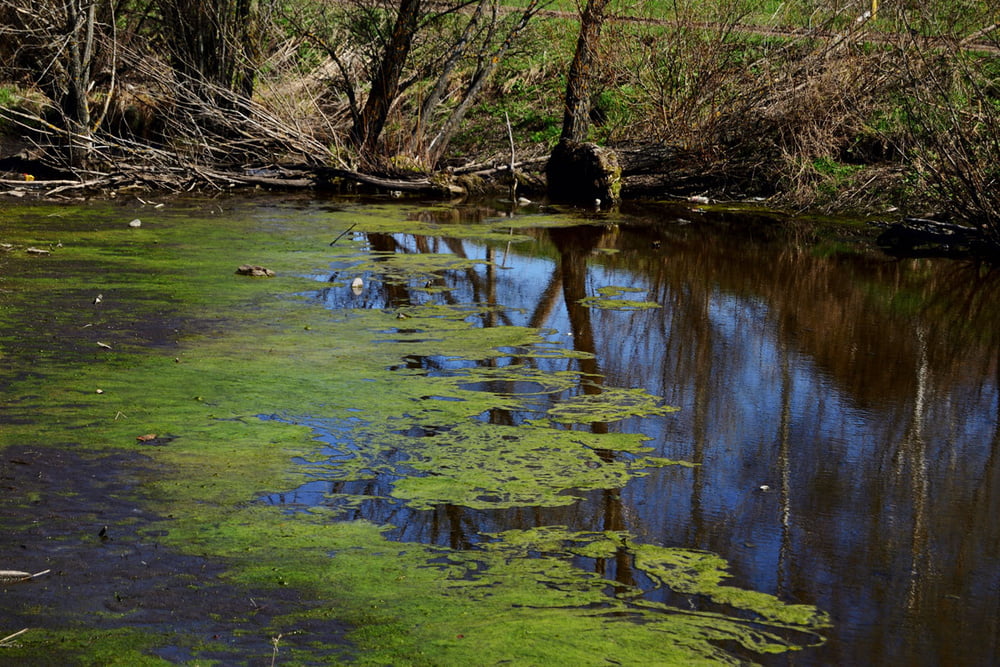If the temperatures on the thermometer climb above the 30°C mark, many like to cool off in a cool swimming lake or even in their own swimming pond. But beware: blue-green algae also love the hot days. We explain how you can recognize blue-green algae, what is so dangerous about them and how you can combat them.
Blue-green algae or cyanobacteria have existed for at least 2.5 billion years. In low concentrations, cyanobacteria are not too bad. For humans and animals, however, it becomes dangerous when they multiply.
Blue-green algae can be found in almost all waters and do not cause any harm.
However, as soon as the temperatures of air and water rise, they multiply explosively. And the higher the concentration of blue-green algae, the more dangerous they are.
Contents
Are blue-green algae dangerous?
Blue-green algae are toxic. Or rather, the toxins produced by the blue-green algae are. Some toxins produced by cyanobacteria are among the most potent naturally occurring toxins of all. In humans, blue-green algae can cause the following symptoms:
- Nausea
- Vomiting
- Headache and earache
- Diarrhea
- skin and mucous membrane irritation
- allergic reactions
- reddened eyes (sometimes even conjunctivitis)
- respiratory problems
Just touching the blue-green algae is better avoided. If water contaminated with blue-green algae is even swallowed, it is better to consult a doctor. Particularly at risk are small children and immunocompromised people as well as animals.
Dogs, for example, can die from drinking water contaminated with cyanobacteria.
You can find out how to protect your dog from blue-green algae from our colleagues at “A Heart for Animals”.
Blue-green algae can multiply not only in bathing lakes or other large bodies of water, but especially in smaller water places such as the garden pond.
There are several possible causes of blue-green algae in the garden pond. Again, rising temperatures are one of the main reasons. But other contaminants can also stimulate the growth of cyanobacteria. For example, if fish food* or even fish excrement collects at the bottom of the garden pond, a decomposition process is set in motion.

Nitrogen is often released in the process. This in turn is absorbed by the blue-green algae. The more nitrogen produced by decomposition, the more blue-green algae form to absorb it.
Another growth promoter of blue-green algae is particularly strong lighting. In general, unshaded waters are more affected by blue-green algae infestation than ponds placed more in the shade. However, artificial light also favors the proliferation of cyanobacteria.
Blue-green algae do not have a real cell nucleus, which is why they are counted among the bacteria. Nevertheless, like plants, they can photosynthesize with the help of carbon dioxide (CO2) thanks to chlorophyll. An increased presence of nitrogen in the water also favors this process.
The blue-green algae decompose the nitrogen and form ammonia, among other things. In increased concentrations, this is toxic for plants, other aquatic organisms and also for humans and animals. Fish in particular die quickly in the contaminated water.
How to recognize blue-green algae?
Even if the name suggests otherwise, blue-green algae are rich green in color. They appear as a kind of “carpet” a few centimeters below the water surface. Blue-green algae rarely form a completely closed blanket that covers the entire body of water. Rather, they concentrate in several different sized clusters near the shore.
Whether your garden pond or the bathing lake of your choice is infested with blue-green algae or whether you can swim there without hesitation or let children and pets near the water can be recognized by a blue-green, sometimes foul-smelling coating on the bottom or the pond liner, stones, other plants and the like. In addition, an oily shimmering film often forms on the water surface.
What can be done against blue-green algae?
In general, prevention is better than cure. Once the concentration of cyanobacteria in your pond is significantly elevated, it can be very difficult to bring it down again.
Test the water quality regularly. Among other things, a special test set* from the trade is suitable for this purpose. When buying one, make sure that it is suitable for pond water and that it can be used to measure the phosphate and ammonium content of the water, among other things.
If you have fish in your garden pond, check their numbers regularly and adjust the amount of food accordingly. Often, additional feeding is not necessary at all, as the fish can often feed very well on the plants growing in the pond as well as insects and aquatic life.
Provide adequate shade for the pond. A screen or something comparable is often not even necessary. Various plants will also take care of this.
Clean your pond regularly. It is not enough to scrape off fallen leaves and the like from the surface of the water, although this is of course also part of pond cleaning. Either you use a special pond filter, or you trust in Mother Nature and put plants with filtering effect into your pond. These include, for example, the so-called water plant* or also spring moss. Also suitable is the water star as well as the water grass. If your pond is already infested with blue-green algae, often only a pond care product from the trade will help. Make sure that the product of your choice is as harmless as possible for your fish and plants.
It is not always possible to prevent an infestation of blue-green algae. How can you? Cyanobacteria occur naturally in any body of water. And the increasingly higher temperatures are difficult to prevent. The important thing is to recognize an infestation early on, protect yourself and others as well as animals from it, and do something about it as quickly as possible. Then nothing will stand in the way of bathing fun in your own garden pond, even in the worst heat wave.
In this text we use so-called affiliate links. Products marked with an asterisk (*) are available for purchase. If the purchase comes about, we receive a small commission. However, you do not pay more for the products than usual. You can find out more about affiliates here.


